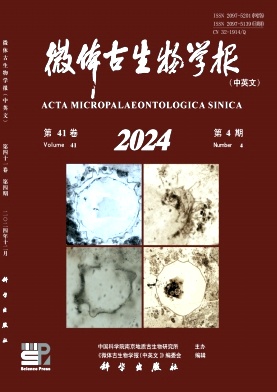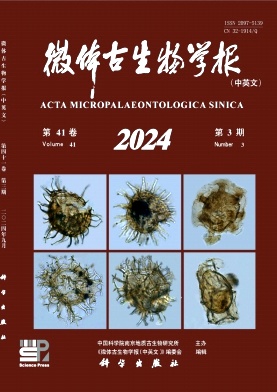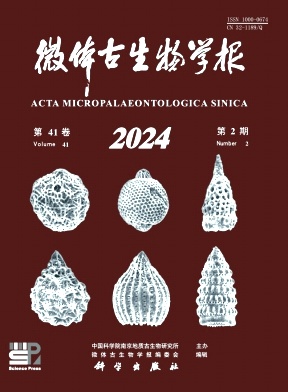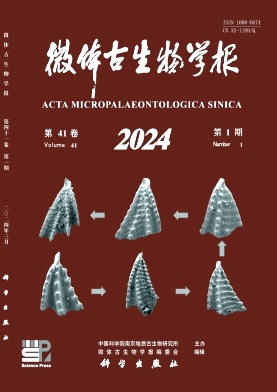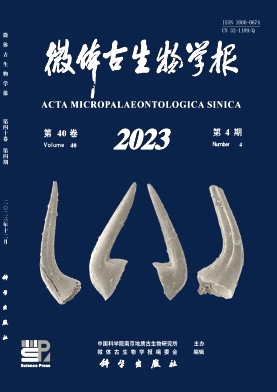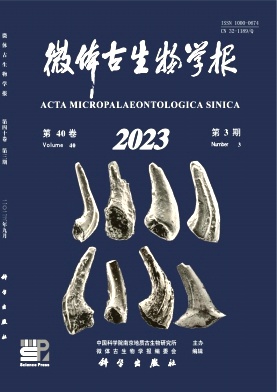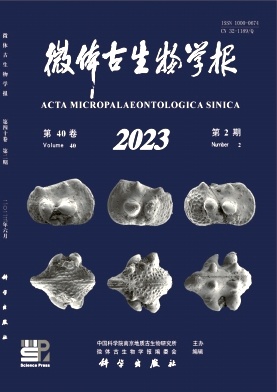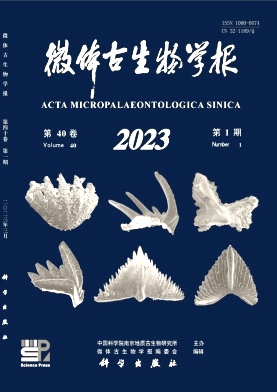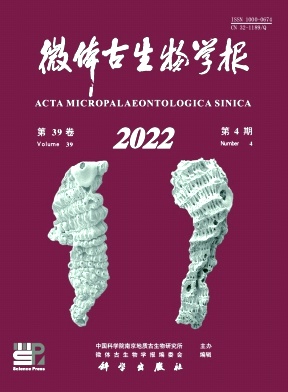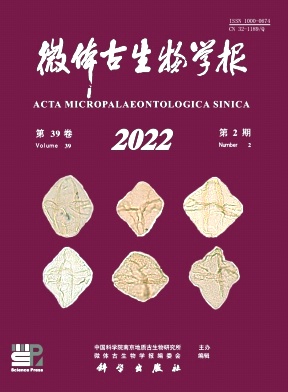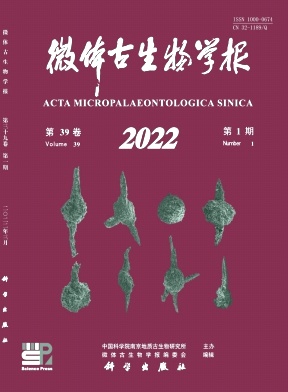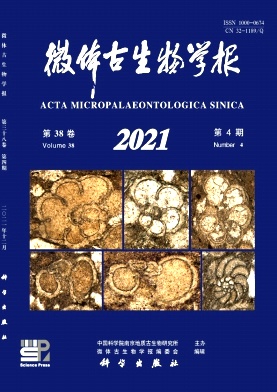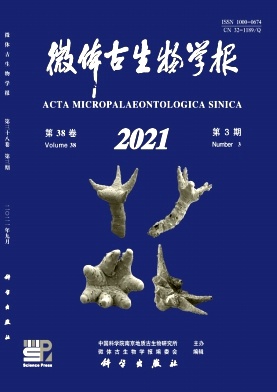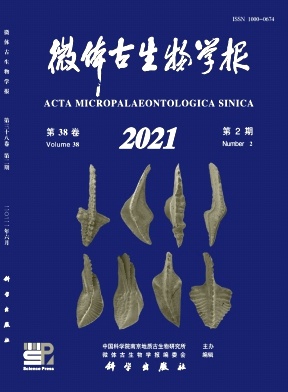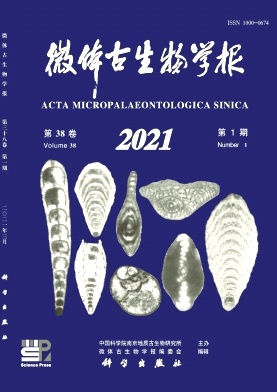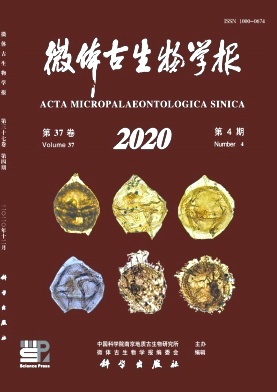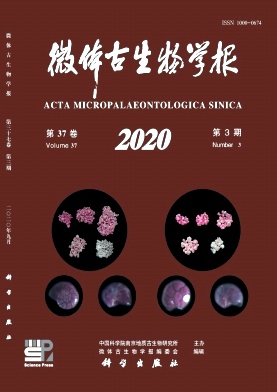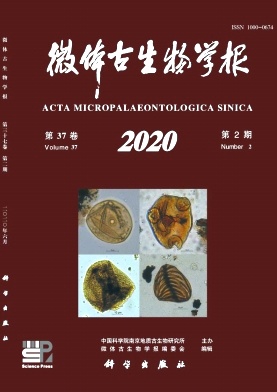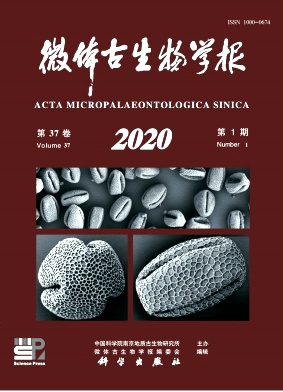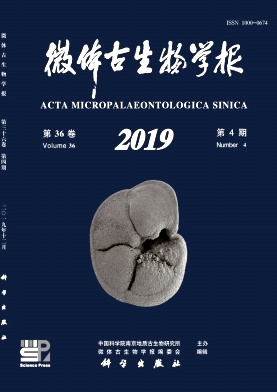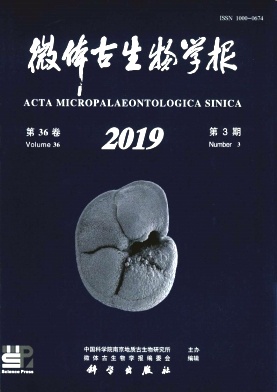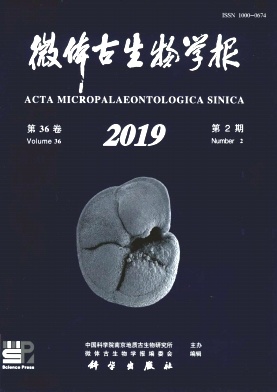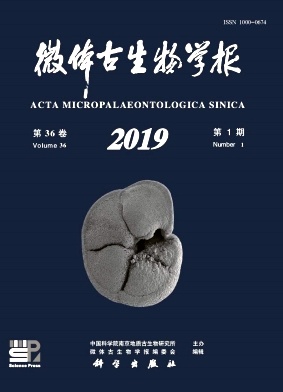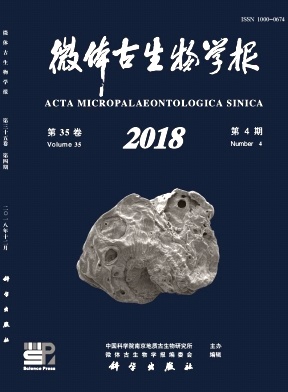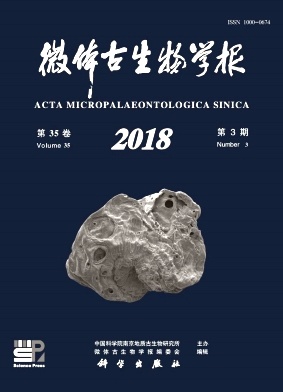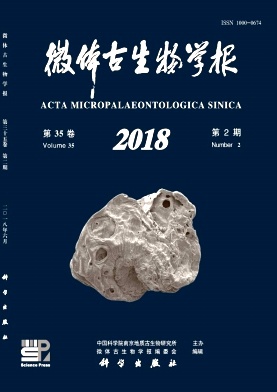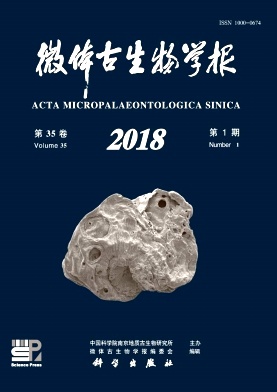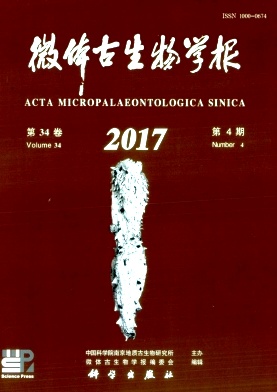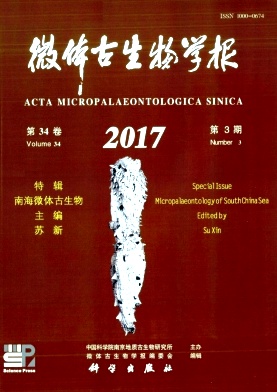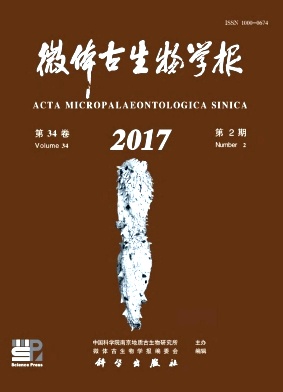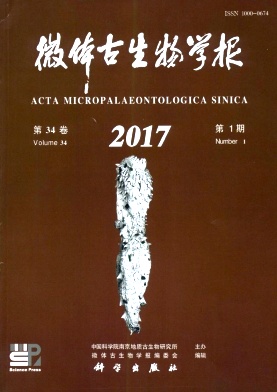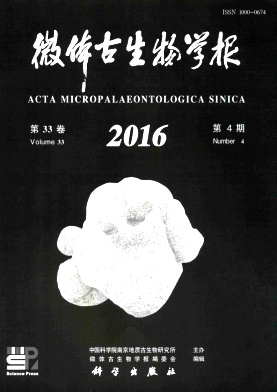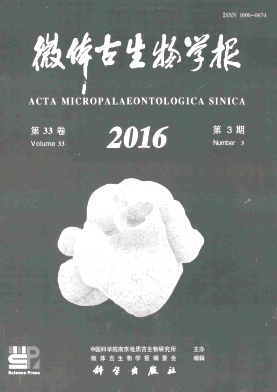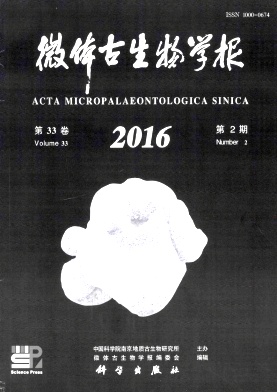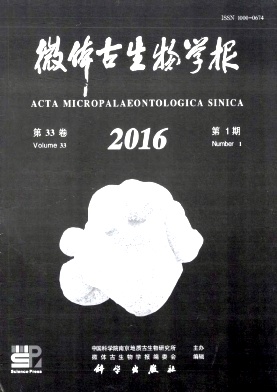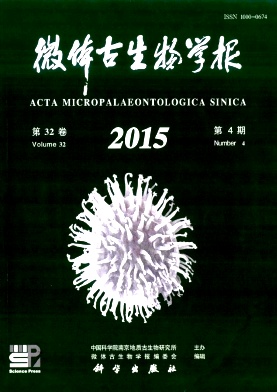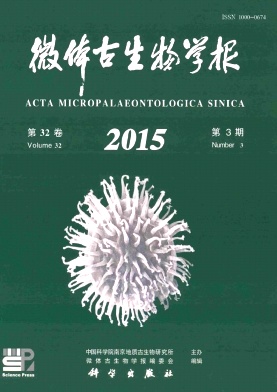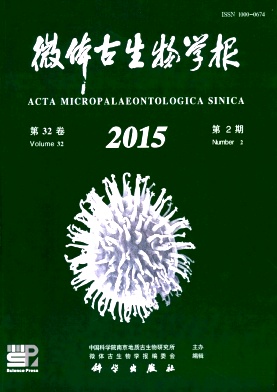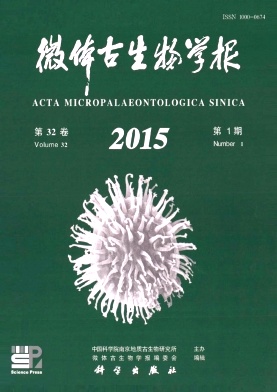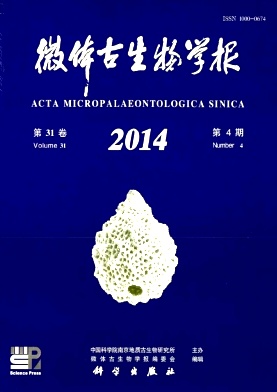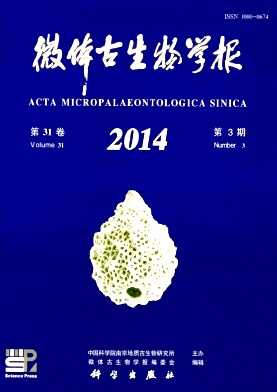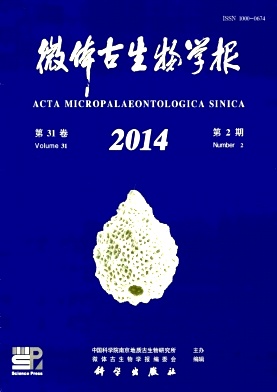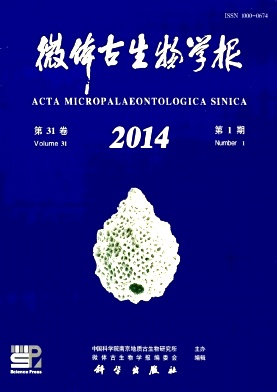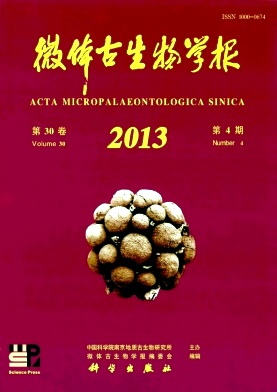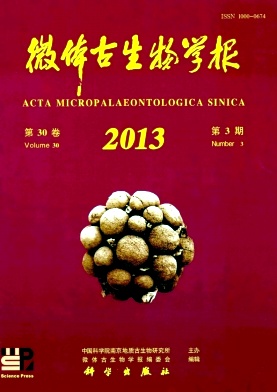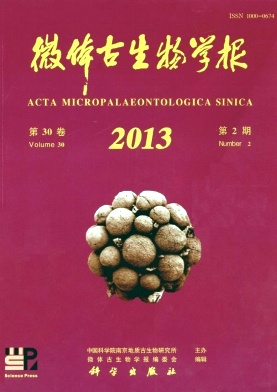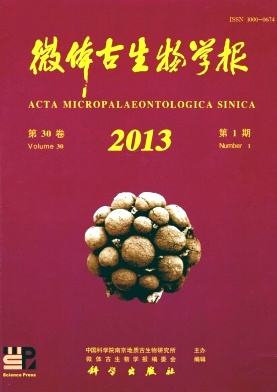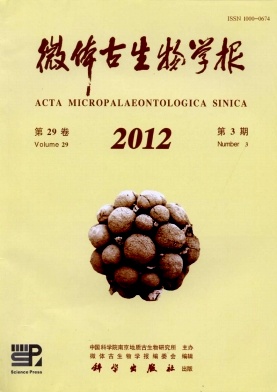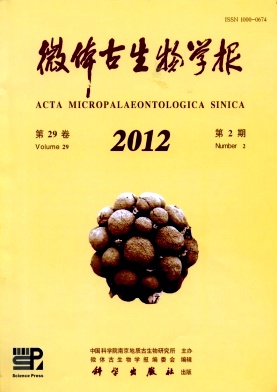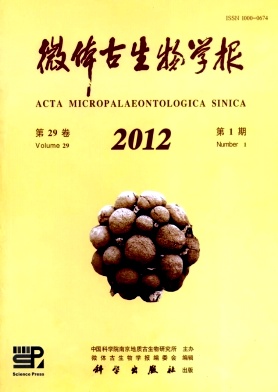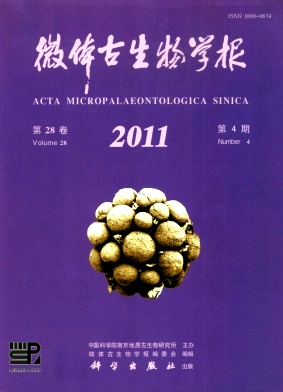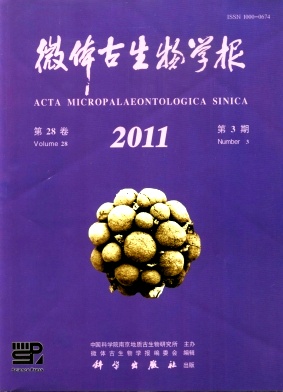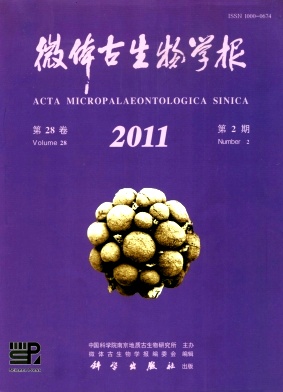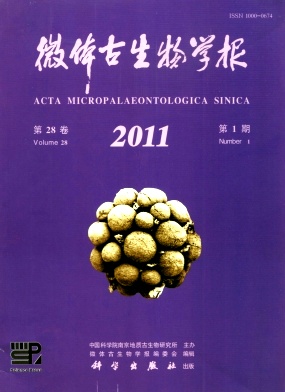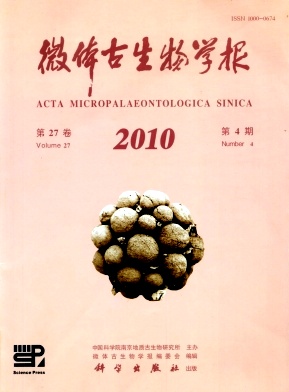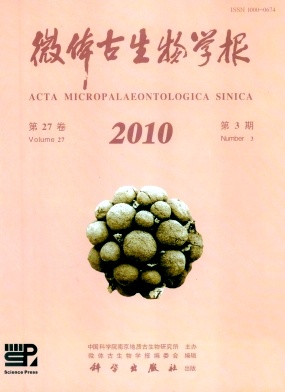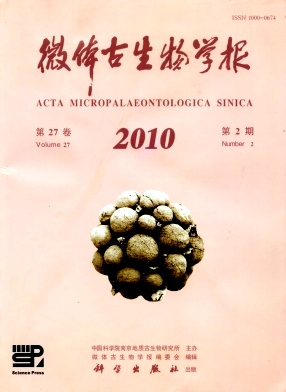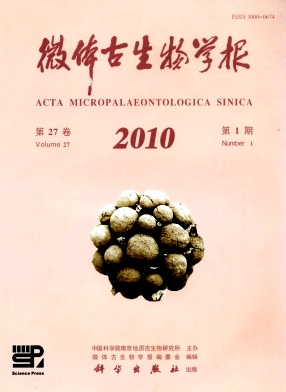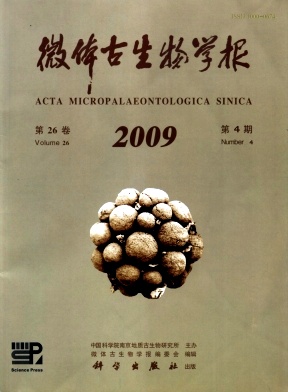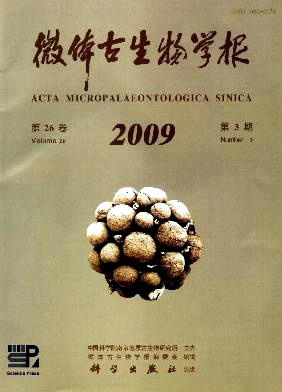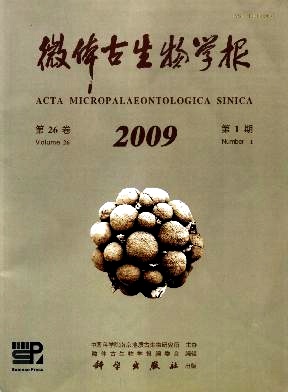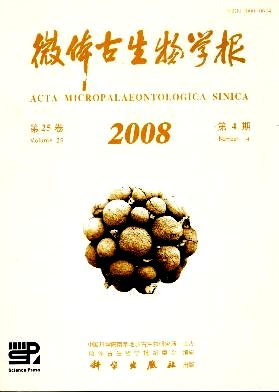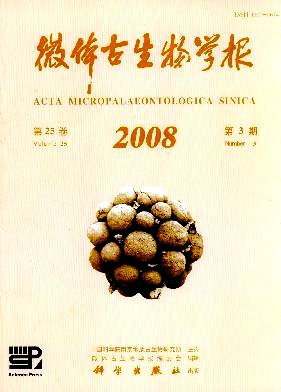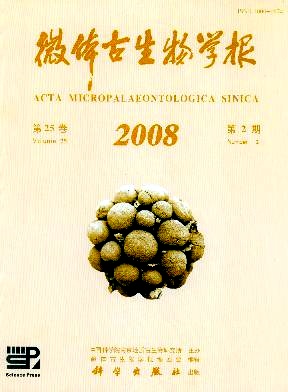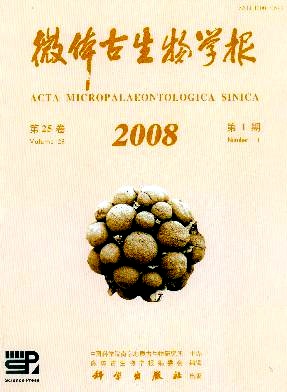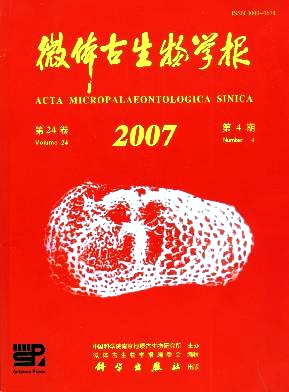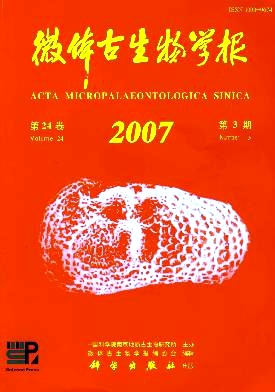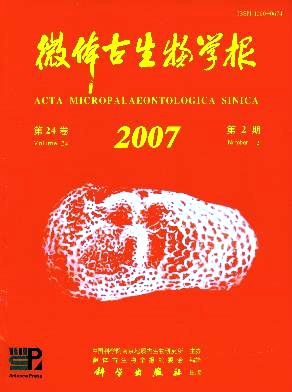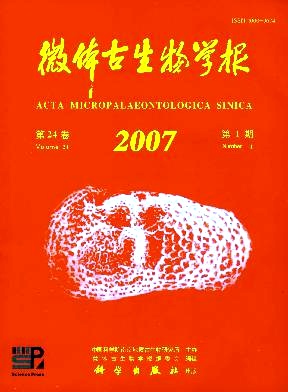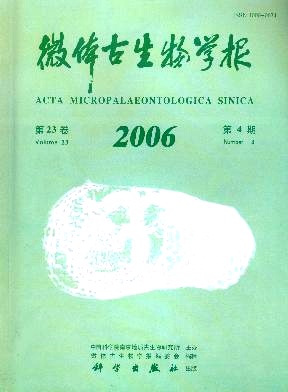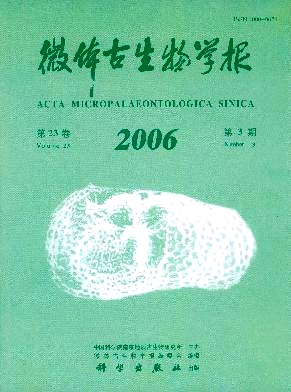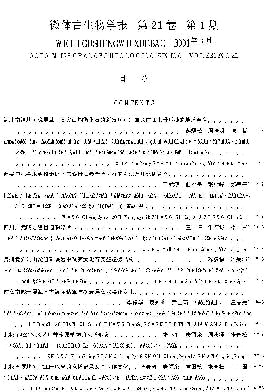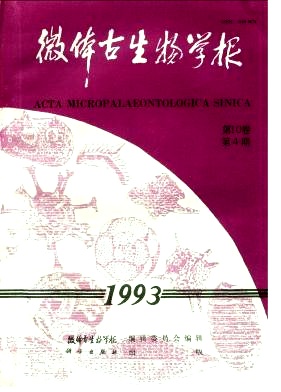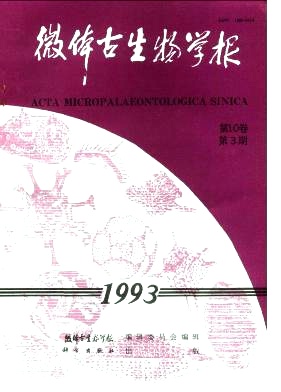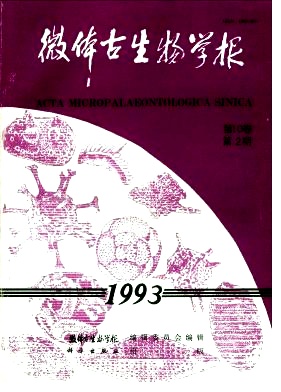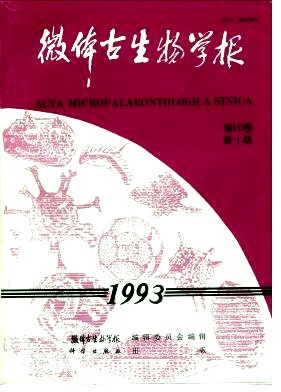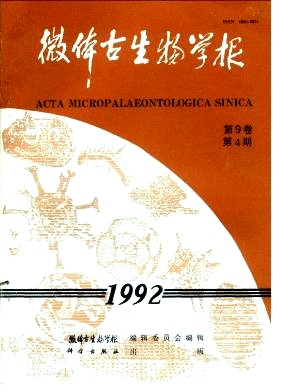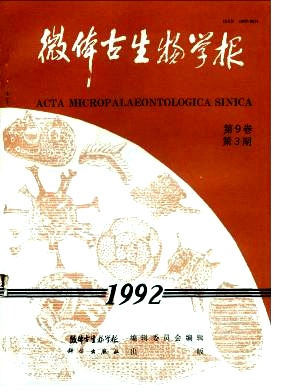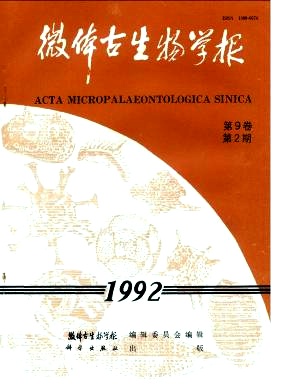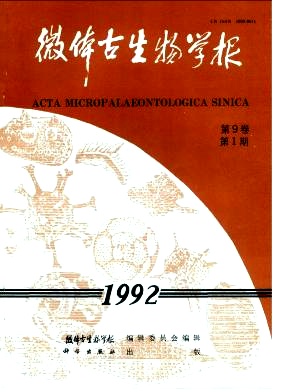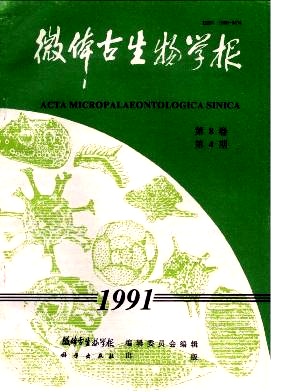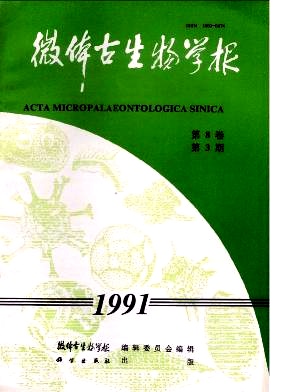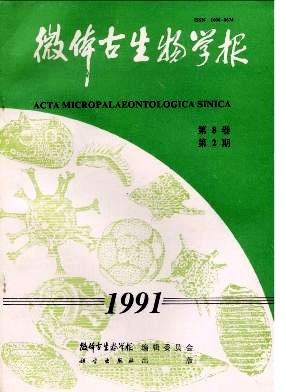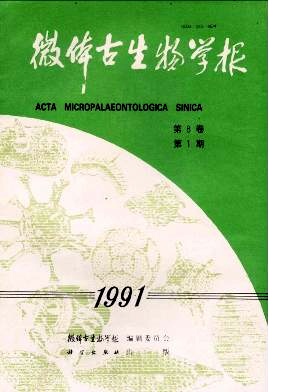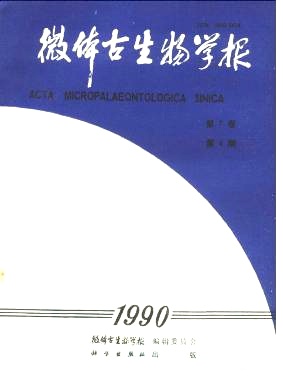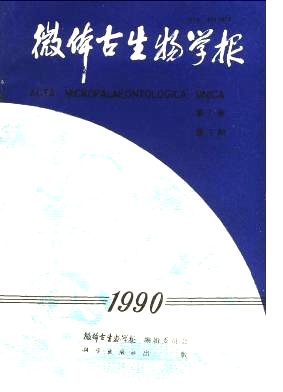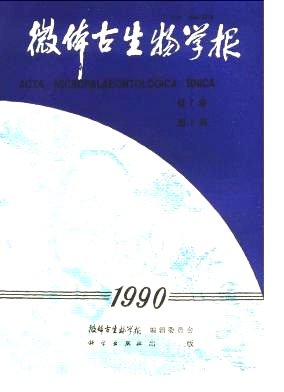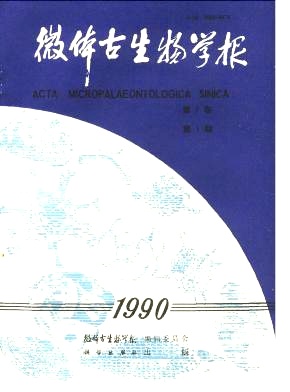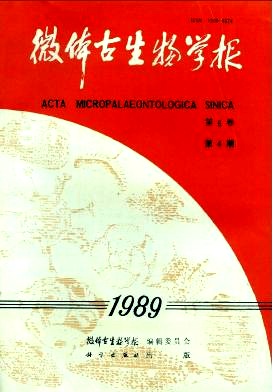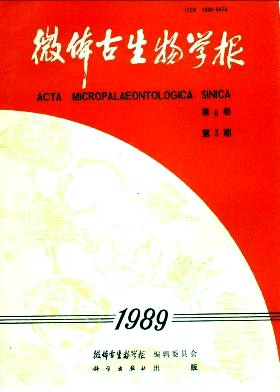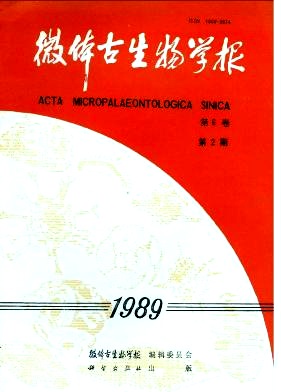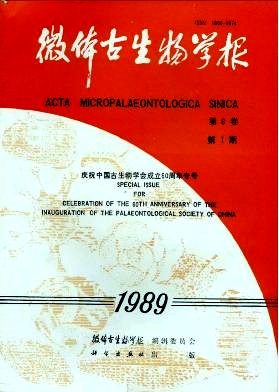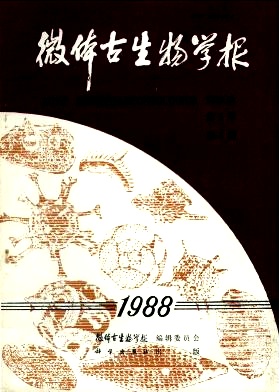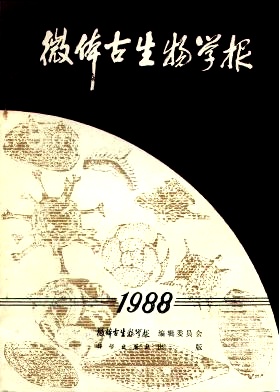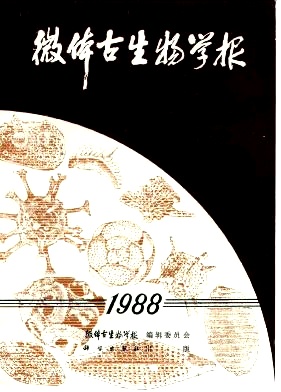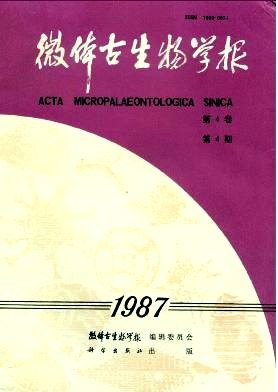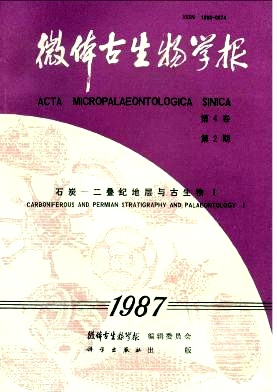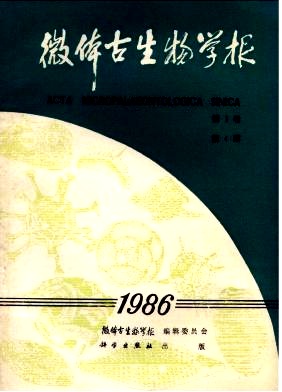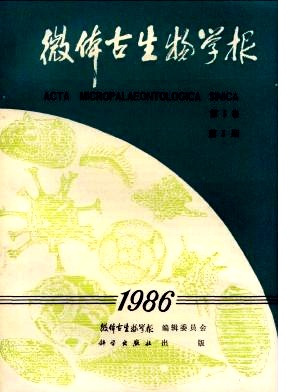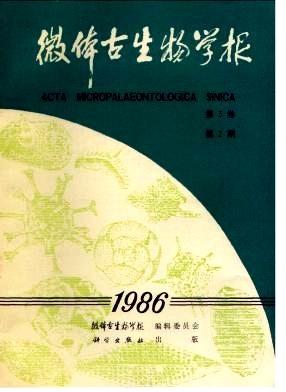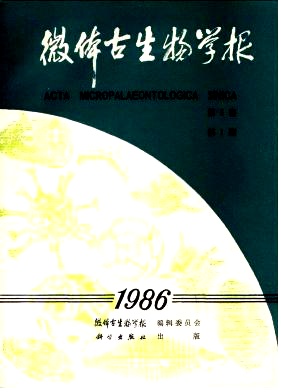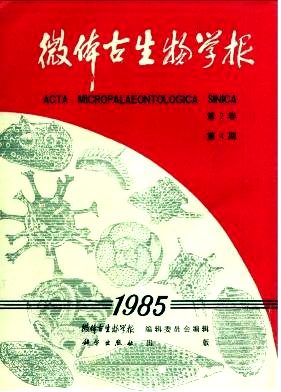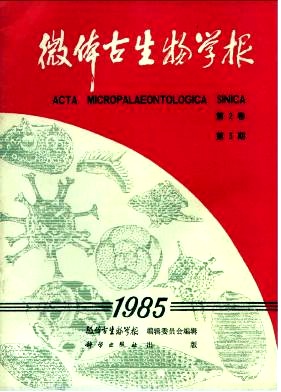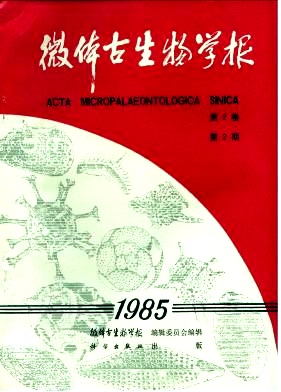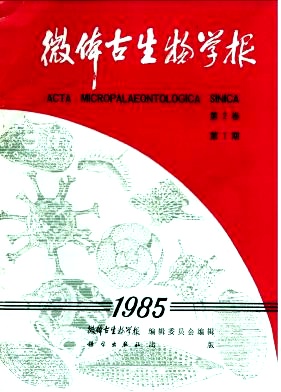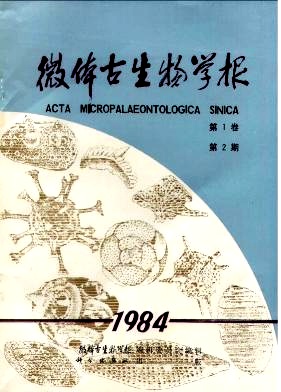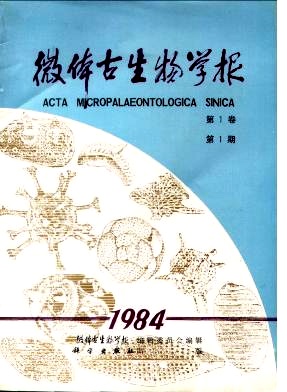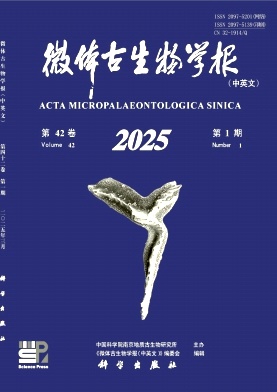
Tracking the information about your manuscript
Communicate with the editorial office
Query manuscript payment status Edit officeCollecting, editing, reviewing and other affairs offices
Managing manuscripts
Managing author information and external review Expert Information Expert officeOnline Review
Online Communication with the Editorial Department
Page Views
Journal information
Acta Micropalaeontologica Sinica (Quarterly)
CN 32-1914/Q
ISSN 2097-5139
EISSN 2097-5201
Started in 1984
Supervised by Chinese Academy of Sciences
Sponsor: Nanjing Institute of Geology and Palaeontology, Chinese Academy of Sciences
Published by Science Press
Telephone: 0086-(0)25-83282122
Email: micropal@nigpas.ac.cn
ANALYTICAL METHOD AND APPLICATION OF CLUMPED ISOTOPE Δ47 IN TRACE CARBONATE——EXAMPLES OF PLANKTONIC FORAMINIFERA AND BRACHIOPOD SHELL
XI Haibin;CHEN Yanlong;WANG Peiyao;ZHANG Zhifei;Carbonate clumped isotope is a new proxy developed in recent years for the reconstruction of temperature changes and climate conditions in geological history.However,most recent studies require a good deal of carbonate samples (>10 mg),which limits its application when only small quality of materials are available (such as foraminifers)in micropaleontological studies.In this paper,a method for the analysis of clumped isotopeΔ47 with trace carbonate was established based on the measurements and analyses process of planktonic foraminifera,brachiopod shell and international carbonate standard materials.The minimum amount of carbonate required is only 3-4 mg.The test results can achieve the same accuracy as the traditional method (SE<0.02‰).TheΔ47 test results of the concentric layers of the brachiopod shell range from 0.693±0.007‰to 0.708±0.009‰,and the transformation of the correction formula represents the shell formation temperature of 12.31-16.98℃,which is basically close to the annual average temperature of seawater recorded at a depth of 20 m.The clumped isotopic composition of planktonic foraminiferal shell is0.643±0.01‰,and the calcification temperature of the shell is 29.53℃after transformation by the correction formula of foraminiferaΔ47-T,which is very similar to the temperature of 29.19℃derived from the Mg/Ca thermometer of foraminifera in the same position and species.This study provides a reference method for clumped isotope analysis of biological samples with limited quality.The establishment of trace sample method improves the feasibility of using biological fossils (such as brachiopods,foraminifers and terrestrial gastropods) to reconstruct paleoclimate.
STROMATOLITES FROM THE EARLY ORDOVICIAN LIANGJIASHAN FORMATION OF XINGXIAN, SHANXI PROVINCE: IMPLICATIONS FOR PALEOENVIRONMENT AND PALEOGEOGRAPHY
LIU Jie;MENG Fanwei;CHEN Zhongyang;XU Yanqi;The stromatolites were widely distributed and thrived during the Precambrian era, reaching their peak in the Mesoproterozoic period, approximately 1.6 billion to 1 billion years ago. After this peak, their numbers began to decrease. However, the stromatolites saw a resurgence during the Cambrian and Early Ordovician periods and then to decline once more up to the present. In the Early Ordovician, the stromatolites have been documented in regions such as Hebei and Shandong in North China. This study identified a set of horizontally extended and widely distributed strata of the genus Stratifera at the base of the Liangjiashan Formation from the Lvjiagou-Muyaotou profile, located in Xingxian County, Shanxi Province, along with the dissolution cavities. The presence of the genus Stratifera normally corresponds with the sedimentary environment of the supratidal and intertidal zones, indicating a short sea-level drop in the context of the Early Ordovician transgression.
MIDDLE AND UPPER ORDOVICIAN CONODONT BIOSTRATIGRAPHY AT THE YUAN'AN AREA, YICHANG IN HUBEI PROVINCE
ZHANG Yatao;GONG Fangyi;LUAN Xiaocong;YAN Guanzhou;ZHANG Zhutong;WEI Xin;WU Rongchang;The Middle and Upper Ordovician conodont biostratigraphy of the Yaohe section, Yichang, Hubei Province,has been reported in the present paper. Fifty-six species of 28 genera have been identified from the Yaohe section. Ten conodont biozones can be observed from the Kuniutan, Miaopo, Pagoda to Linhsiang formations, in ascending order,including the Lenodus antivariabilis, L. variabilis, Yangtzeplacognathus crassus, Eoplacognathus pseudoplanus, E.suecicus, Y. foliaceus, Y. protoramosus, Y. jianyeensis, Baltoniodus alobatus and Hamarodus brevirameus biozones.The conodont biozones recognized in the Yaohe section can be correlated well with those from other areas in the Yangtze Platform and other palaeoplates.
NEW MOSCOVIAN IDIOGNATHODUS(CONODONT,PENNSYLVANIAN) SPECIES FROM THE NAQING SECTION,GUIZHOU,SOUTH CHINA
HU Keyi;QI Yuping;WEI Shengze;The conodont genus Idiognathodus is one of the most important taxa in Pennsylvanian biostratigraphy.However, numerous unnamed species prevent us from understanding the evolutionary history of the genus and lower the potential of Idiognathodus species in the biostratigraphic correlation. New species I. anteparallelus sp. nov., I.prosonimius sp. nov., and I. zhuotingi sp. nov. from the Naqing section, southern Guizhou, South China are systematically described in this paper. The three new species are short-ranging taxa found in the I. podolskensis to Swadelina sp. A zones of the middle-late Moscovian. They are characterized by symmetrically paired P1 elements with a long carina, loosely space transverse ridges, and restricted accessory lobes, which are not commonly seen in the coeval I. podolskensis group. By gradually modifying adcarinal ridges, the three species constitute an evolutionary lineage. In addition, based on the new conodont data and hypotheses proposed by other researchers previously, the early evolution of the genus Idiognathodus is also discussed briefly. Species assigned to the genus Idiognathodus currently may be a polyphyletic group that evolved from different ancestors in the Bashkirian.
EARLY-MIDDLE JURASSIC SPOROPOLLEN ASSEMBLAGES FROM WELL XIAOCHAIXIE 2 AT THE NORTHERN MARGIN OF QAIDAM BASIN
HE Zhenjian;ZHANG Cunxia;LIU Junmin;WANG Dahua;HU Liang;Abundant pollen and spore grains are discovered from the 1 930~2 350 m section in depth of Well Xiaochaixie 2, northern Qaidam Basin. They are recognized to form four assemblages:(1) Cyathidites-ClassopollisInaperturopollenites assemblage, occurring in 2 120 m to 2 350 m in depth, the third member of the Dameigou Formation,being Toarcina of late Early Jurassic in age;(2) Cyathidites-Deltoidospora-Disaccites assemblage, occurring in 2 060m to 2 120 m in depth, the fourth and fifth members of the Dameigou Formation, with Aalenian to Bajocian of early Middle Jurassic in age;(3) Disaccites-Inaperturopollenites-Psophosphaera assemblage, occurring in 2 010 m to 2 060m in depth, the sixth member of the Dameigou Formation, being Bathonian of middle Middle Jurassic in age;(4)Disaccites-Classopollis assemblage, occurring in 1 930 m to 2 010 m in depth, the seventh member of the Dameigou Formation, being Callovian of late Middle Jurassic in age. Based on the spore-pollen assemblages found here, the palaeoclimate of Well Xiaochaixie 2 during the Early-Middle Jurassic is considered subtropical-warm temperate, with obvious fluctuations of dry and wet stages: being dry in the late Early Jurassic, relatively humid in the early Middle Jurassic, keeping humid but turning drought in the middle Middle Jurassic, and dry in the late Middle Jurassic.Lithological characteristics of the studied well show that the upper part of the third to fifth members of the Dameigou Formation are reservoirs and the sixth and seventh members of the Dameigou Formation are hydrocarbon source rocks.
EARLY CAMBRIAN MICROBIALITES IN EASTERN PART OF THE HIGH-ATLAS, MOROCCO, AND THEIR EVOLUTIONARY CORRELATION WITH CHINA
WANG Jianpo;ZENG Xiongwei;WANG Chenggang;HE Yaoyan;LI Fulin;WU Fafu;Complete latest Ediacaran-early Cambrian stratigraphic sequences occurred in the High-Atlas and Anti-Atlas in Morocco, which belonged to the northwestern margin of the West African Craton on the western part of the Gondwana, and abundant microbialites developed in them. New microbialites are found in the lower part of the Cambrian Stage 2-Stage 4 Lemdad Formation in the eastern High-Atlas, they,with mound-shapes,distribute in several layers and horizontally connect. Lower flat- and wavy-laminated stromatolites and upper grainy thrombolites compose the mounds, meanwhile the joints share the similar structure with the mounds or occur just as flat-laminated stromatolites. Dark microbial mats commonly grew in the underlying and overlying strata, among which Epiphyton-like bushes could be distinguished in the overlying strata.The assemblage resembles those microbialites developed in the High-Atlas, Morocco, during the same period, they include wavy-laminated, bulbous-, mound-shapes stromatolites, Girvanella crusts, Epiphyton bushes, thrombolite-stromatolite intergrowth mounds. When comparing the microbialitic evolution sequences of Morocco and the Yangtze, Tarim and North China plates during the latest Ediacaran to early Cambrian period, it shows that evolution from stromatolites, thrombolites to archaeocyathan reefal microbialites exhibited in Morocco and Yangtze, while archaeocyathan reefs developed in Tarim and North China yet, archaeocyathan reefal microbialites were still scarce in them. Varying degrees of stratigraphic loss in the three plates of China during this period may have affected the development and evolution records of microbialites. Deposition of detrital and phosphate rocks after stratigraphic loss, as well as the high salinity environment of high temperature and drought, had also limited the formation and development of archaeocyathan reefs and archaeocyathan reefal microbialites.Sheet-like microbialites are abundant in Morocco, which may be related to frequent input of debris caused by turbulent tectonic environment inhibiting stable developments. On the contrary, there are few records of the sheet-like microbialites in the three plates of China.
LATE QUATERNARY VEGETATION AND PALEOCLIMATE RECONSTRUCTION BASED ON SPORES AND POLLEN DATA FROM THE HULAN RIVER BASIN, NORTHEASTERN CHINA
WANG Jiaru;NING Kai;YANG Zhenjing;WANG Guowen;LI Yaping;ZHANG Lin;GUO Hualiang;JIANG Zhengwu;LIU Aoran;The ecological environment of Northeast China is fragile and highly sensitive to Quaternary climate changes. Recent researches on Northeast black soils have predominantly concentrated on sedimentology and soil development. However, the scarcity of climate reconstruction records has impeded the exploration of the relationship between climate change and black soil development. In this study, we utilized modern sporulation and meteorological data, as well as fossil sporulation from the Northeast Plain. Through the selection of a training set, screening of master climate parameters, cross-validation of four reconstruction models, and significance testing, we concluded that the weighted weighted average (LWWA) method provided the most robust reconstruction results in this study. The results of the climate reconstruction indicated that the climate in the Hulan River Basin shifted from warm and humid to warm and arid since 35 000 cal yr BP, and precipitation decreased since the Holocene. The climate change is consistent with the solar radiation and the climate change of the Northeast monsoon margin area during the same period. It is hypothesized that the climate change in the study area is driven by the East Asian monsoon, which in turn influences the climate change in the Northeast. This study provides evidence of quantitatively reconstructed climate change since the Late Quaternary at the regional scale, which offers an important scientific basis for further understanding of the environmental evolution of the Northeast region.
EMERGING TRENDS IN PALEOBIOGEOGRAPHIC RESEARCH
LIU Shasha;LI Qijian;NA Lin;YU Shenyang;MAO Yinyan;As a significant branch of biogeography, paleobiogeography examines the distribution patterns and underlying mechanisms of biota across geological time and space. With the advent of the information era, the integration of quantitative modeling, GIS technology, network analysis, large-scale databases, and spatial subsampling is profoundly transforming the research paradigm of paleobiogeography. This paper provides a concise overview of the developmental trajectory and major research stages in the field, emphasizing the emerging methodologies developed over the past two decades. By systematically organizing and comparing these new approaches and illustrating their application through representative case studies, this study highlights how these advances have expanded research perspectives and methodological frameworks in paleobiogeography. Additionally, we discuss current challenges and potential future directions, aiming to provide conceptual and methodological insights for advancing research in this evolving field.
FORAMINIFERA FOSSILS IMAGE DETECTION INTEGRATING FOCALNET AND YOLOV5 MODELS
ZHENG Yanmei;RONG Lun;LU Bibo;NIU Yongbin;ZHANG Xin;Genus of foraminifer fossils has important applications in stratigraphic division and correlation, paleoenvironment and paleoclimate reconstruction, etc. Its traditional classification relies on staff experience, which is costly, long cycle time and heavy workload. In this paper, a deep learning-based approach for foraminifer detection is proposed: Focal-modulation backbone network FocalNet-YOLO. This method is based on YOLOv5 network, combined with the focus Modulation idea of FocalNet, and uses Focal Modulation as a token within the transformer network to optimize the YOLO network structure. The target detection accuracy and recall rate are improved. The experimental results show that the algorithm can detect 21 foraminifer genera, and the average accuracy rate is 99.6%, the recall rate is 99.8%, and the model size is reduced by 22.2%. This method can help to quickly determine the genus name of foraminifer fossils, and help to quickly determine the geological age of samples, which has potential application value.
PROGRESS AND PROSPECTS OF LUMINESCENCE DATING ON BIOGENIC SILICA
WANG Shizhe;ZUO Xinxin;JIN Jianhui;Quartz and feldspar serve as the common material for luminescence dating of sediments. However, a limitation arises when applying this dating technique to sediments lacking these minerals. New materials are expected to be developed to overcome this limitation. Biogenic silica (BSi) , an amorphous hydrated silica (SiO2 · nH2O), derived from biological sources, is predominantly found in various types of Quaternary sediments in the form of diatoms, phytoliths, sponge spicules, radiolarians, and silicoflagellates. Previous research has indicated that BSi exhibits luminescence properties and demonstrates significant potential as a reliable material for dating Quaternary sediments. This material also holds promise for dating biogenic silicon-rich sediments, such as peat and diatomite that lack inorganic detrital minerals, as well as those with poorly preserved organic matter. This paper aims to provide a comprehensive overview of the current research status of BSi luminescence dating while discussing its potential benefits, as well as the challenges and obstacles that lie ahead. To promote the application of BSi luminescence dating, future research should focus on developing effective purification methods and advancing research on luminescene properties, dose rate measurements, and burial processes. By addressing these limitations, BSi is expected to be more widely applied in paleoenvironmental and archaeological research by providing direct and reliable dates for the sediments and the cultural contexts.
ON CRETACEOUS PALEOCLIMATE IN THE SONGLIAO BASIN
Huang Qing hua Zheng Yu long Yang Ming jie Li Xing jun Han Min xin Chen Chun rui (E & P Research Institution, Daqing Petroleum Adminstrative Bureau, Daqing 163712)ON THE MEANING OF PHYTOLITH AND ITS CLASSIFICATION IN GRAMINEAE
LU·· Hou yuan 1) , JIA Ji wei 1) , WANG Wei ming 2) , WANG Yong ji 3) and LIU Kam biu 4) 1) Institute of Geology and Geophysics, Chinese Academy of Sciences, Beijing 100029 2) Nanjing Institute of Geology and Palaeontology, Chinese Academy of Sciences, Nanjing 210008 3) First Institute of Oceanography, State Oceanic Administration, Qingdao 266061 4) Department of Geography and Anthropology, Louisiana State University, Louisiana 70803, USAA new term is formerly put forward to unify the ever increasing difference in translations of “Opal phytolith” and “Silica bodies”, etc. in China. Much confusion exists in the classification and descriptive terminology of grass phytoliths. This paper introduces and summarizes the current phytolith classifications in Gramineae. A detailed comparison is made to show their difference and some possible correlations. It is anticipated that the unified glossary of terms, and standardisation of nomenclature in phytolith classification will greatly promote the development of phytolith research in various scopes.
THE LATE CRETACEOUS BIO EVOLUTION AND ANOXIC EVENTS IN THE ANCIENT LAKE IN THE SONGLIAO BASIN
Huang Qing hua Chen Chun rui Wang Ping zai Han Min xin Li Xing jun and Wu Da qing (E & P Research Institution, Daqing Petroleum Adminstrative Bureau, Heilongjiang 163712)CHARACTERISTICS AND AGE OF THE DINGQING OPHIOLITE IN XIZANG (TIBET) AND THEIR GEOLOGICAL SIGNIFICANCE
WANG Yu jing (Nanjing Institute of Geology and Palaeontology, Chinese Academy of Sciences, Nanjing 210008) WANG Jian ping, LIU Yan ming, LI Qiu sheng and PEI Fang (Henan Geological Survey, Zhengzhou 450007)The sequences of the Dingqing Ophiolite in East Tibet are complete. Late Triassic radiolarians were discovered from the siliceous rocks of abyssal sediments, consisting mainly of Capnuchosphaera theloides, C. triassica, Palaeosaturnalis triassicus, Pseudoheliodiscus latus, Xenorum flexum, Pseudostylosphaera gracilis, Veghicyclia austriaca, Perispongidium tethyus, Spongostylus tortilis, S. carnicus, Annulotriassocampe sulovensis, Canoptum triassicum, Poulpus piabyx, Xiphotheca karpenissionensis, Laxtorum(?) carnicum which are of Carnian age. Discovery of these radiolarians indicates that a comparatively mature ocean basin was developed during Triassic in the Dingqing belt and that the evidence was provided for the evolution of the Neo Tethys.
HIGH RESOLUTION SPOROPOLLEN RECORD AND ENVIRONMENTAL CHANGE SINCE HOLOCENE IN THE WULUNGU LAKE, XINJIANG
XIAO Xia-yun 1,2), JIANG Qing-feng 1,2), LIU Xing-qi 1), XIAO Hai-feng 1,2) and SHEN Ji 1) 1) Nanjing Institute of Geography and Limnology, CAS, Nanjing 210008, China2) Graduate School, CAS , Beijing 100039, ChinaAccording to high resolution sporopollen analysis from a core of the Wulungu Lake, Xinjiang, we have discovered that the climate since Holocene in the research region can be divided into four stages. During about 9.99—7.72 cal. kaBP, climate was mild and dry. Stage of 7.72—3.62 cal. kaBP, climate gradually turned to warm and moderately dry condition from mild and moderately humid condition. In 3.62—1.24 cal. kaBP climate shifted from cool and dry condition into cool and moderately humid, and then to mild and humid condition. From 1.24 cal. kaBP to today, climate was generally mild and dry condition. During the four stages, some abrupt cooling events can be identified at time slices of 8.90, 8.35, 3.62? ?.80, 0.82—0.45 and 0.23 cal. kaBP. During about 9.99—7.72 cal. kaBP, sporopollen assemblage can only reflect aquatic vegetations around the Wulungu Lake which evolved from domination of Phragmites into aquatic flora dominated by Sparganium. Since 7.72 cal. kaBP, the assemblage can represent regional vegetation. Corresponding to climate, regional vegetation experienced several changes as following successionally: desert-steppe vegetation → desert vegetation → desert-steppe vegetation → steppe or desert vegetation → steppe vegetation → desert vegetation → desert-steppe vegetation.
REVIEWS AND PROSPECTIVES ON THE STUDIES OF BIOLOGICAL EVOLUTION
HAO Jiasheng Nanjing institute of Geology and Palaeontology, The Chinese Academy of Sciences, Nanjing 210008Evolution is the most charming and ever lasting phenomenon of life and nature. In this paper, we summarized the various evolutionary theories emerged in the history of science: Lamarkism, Darwinism, neo Darwinism, the synthetic theory of evolution, the neutral theory of molecular evolution, neo Catastrophism and the theory of punctuated equilibrium etc. We also briefly discussed the several important branches of biology and life science involved in the current studies of evolutionary biology, focusing on several issues alive and continually debated in the fields of evolutionary studies. Meanwhile, we present our perspectives of evolutionary biology and evolutionary theory in the 21st century: under the direction of philosophy and concrete theories of methods, the big comprehensiveness of evolutionary studies and a new synthesis of evolutionary theories will emerge in the near future as the development of life science and other natural sciences and the union of the ideas of genetics, developmental and evolutionary biology.
ON THE MEANING OF PHYTOLITH AND ITS CLASSIFICATION IN GRAMINEAE
LU·· Hou yuan 1) , JIA Ji wei 1) , WANG Wei ming 2) , WANG Yong ji 3) and LIU Kam biu 4) 1) Institute of Geology and Geophysics, Chinese Academy of Sciences, Beijing 100029 2) Nanjing Institute of Geology and Palaeontology, Chinese Academy of Sciences, Nanjing 210008 3) First Institute of Oceanography, State Oceanic Administration, Qingdao 266061 4) Department of Geography and Anthropology, Louisiana State University, Louisiana 70803, USAA new term is formerly put forward to unify the ever increasing difference in translations of “Opal phytolith” and “Silica bodies”, etc. in China. Much confusion exists in the classification and descriptive terminology of grass phytoliths. This paper introduces and summarizes the current phytolith classifications in Gramineae. A detailed comparison is made to show their difference and some possible correlations. It is anticipated that the unified glossary of terms, and standardisation of nomenclature in phytolith classification will greatly promote the development of phytolith research in various scopes.
HOLOCENE BENTHIC FORAMINIFERA AND OSTRACODA FROM THE SHELF MUD AREA OF THE EAST CHINA SEA AND THEIR PALEOENVIRONMENTAL IMPLICATIONS
ZHAO Quan-hong 1),JIAN Zhi-min 1),ZHANG Zai-xiu 1),CHENG Xin-rong 1),WANG Ke 1) and ZHENG Hong-bo 2) 1) State Key Laboratory of Marine Geology,Tongji University,Shanghai 2000922) School of Earth Sciences and Engineering,Nanjing University,Nanjing 210039Core MD06-3040 was taken from the mud area off the Zhejiang-Fujian coast of the East China Sea(27°43.3663'N,121°46.8822'E,water depth 47 m,core length 19.36 m).A total of 257 samples were quantitatively analyzed for paleontological study of planktonic,benthic foramini-fera and ostracods as well as their paleoenvironmental implications.Holocene paleoenvironmental evolution since 10.6 cal.kaBP has been discussed by benthic foramini-feral and ostracod assemblages and some important ecological indicators(infaunal/epifaunal,inner-shelf/inner-middle shelf,warm-water species groups).Results show a rapid sea-level rise during the early Holocene from the inner inner-shelf(10.6—9.8 cal.kaBP),outer inner-shelf(9.8—7.8 cal.kaBP) to the middle shelf with the highest sea-level(7.8—3.4 cal.kaBP).The Taiwan Warm Current is suggested to be developed since 8.0 cal.kaBP and its derived upwelling appeared during the periods of 5.7—2.8 and 0.7—0 cal.kaBP respectively,resulting in the rapid mud depo-sition on the shelf of the East China Sea.The marked increase in abundance of planktonic foraminifera Globigerina bulloides is referred to the enhancement of the Zhejiang-Fujian Coast Current during 4.9—3.2 cal.kaBP.
ADVANCE IN PHYTOLITH MORPHOLOGY RESEARCH
GAO Guizai;JIE Dongmei;LIU Lidan;LIU Hongyan;GAO Zhuo;LI Dehui;LI Nannan;School of Geographical Science,Northeast Normal University;State Environmental Protection Key Laboratory of Wetland Ecology and Vegetation Restoration;Institute of Grassland Science,Northeast Normal University;Key Laboratory for Vegetation Ecology,Ministry of Education;Phytolith morphology provides the basis for palaeoenvironment reconstruction of phytoliths,which may affect the accuracy of its application.In the respect of maternal plants from which phytoliths derive,this paper summaries the distinctive phytolith types and phytolith assemblages and compares the subtle differences between same phytolith types in different plants representing 21 herbaceous plants and 20 woody plants.Summary of previous works and the latest research achievements on phytolith morphology study may be helpful for future study on the application of phytolith in classification of modern plant and reconstruction of ancient environment.
